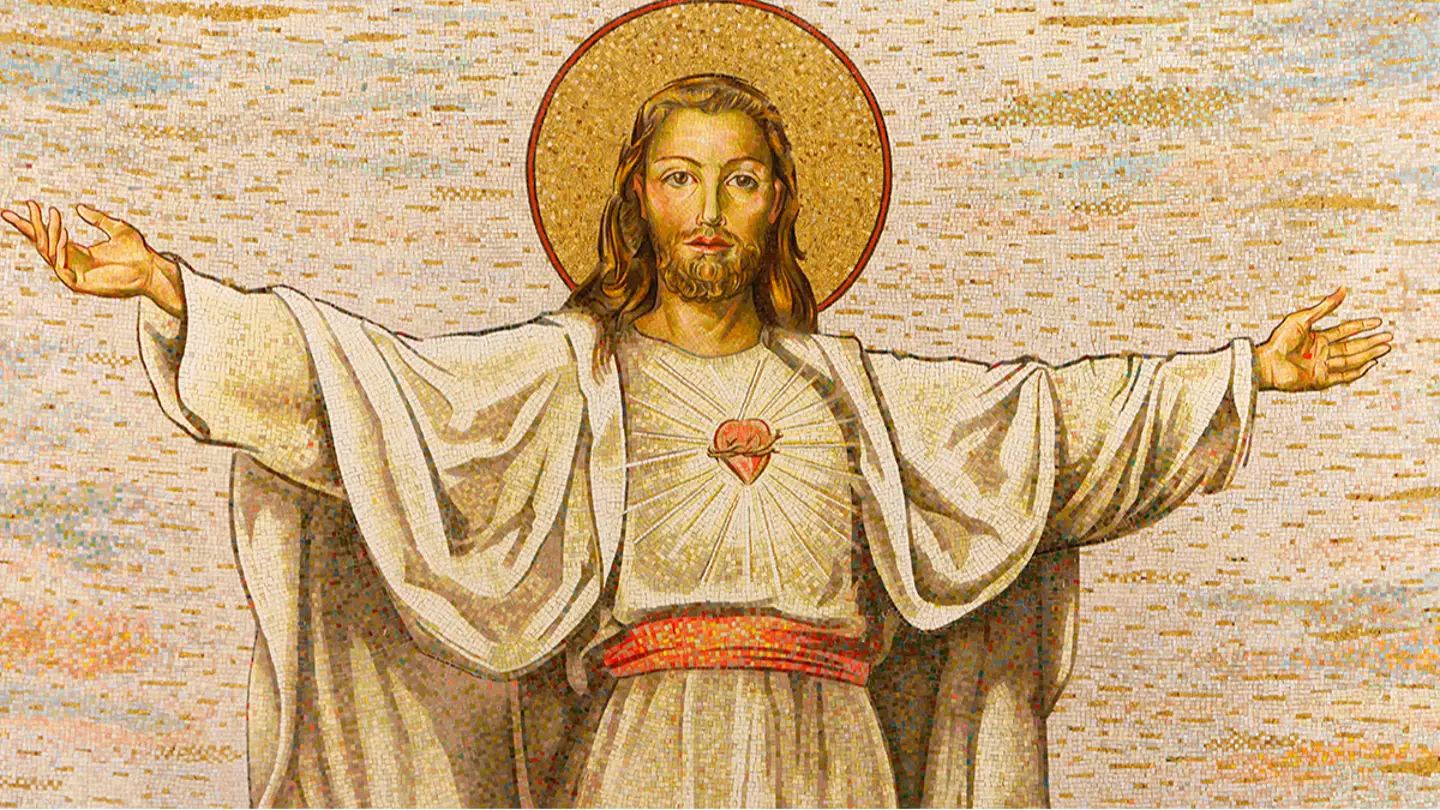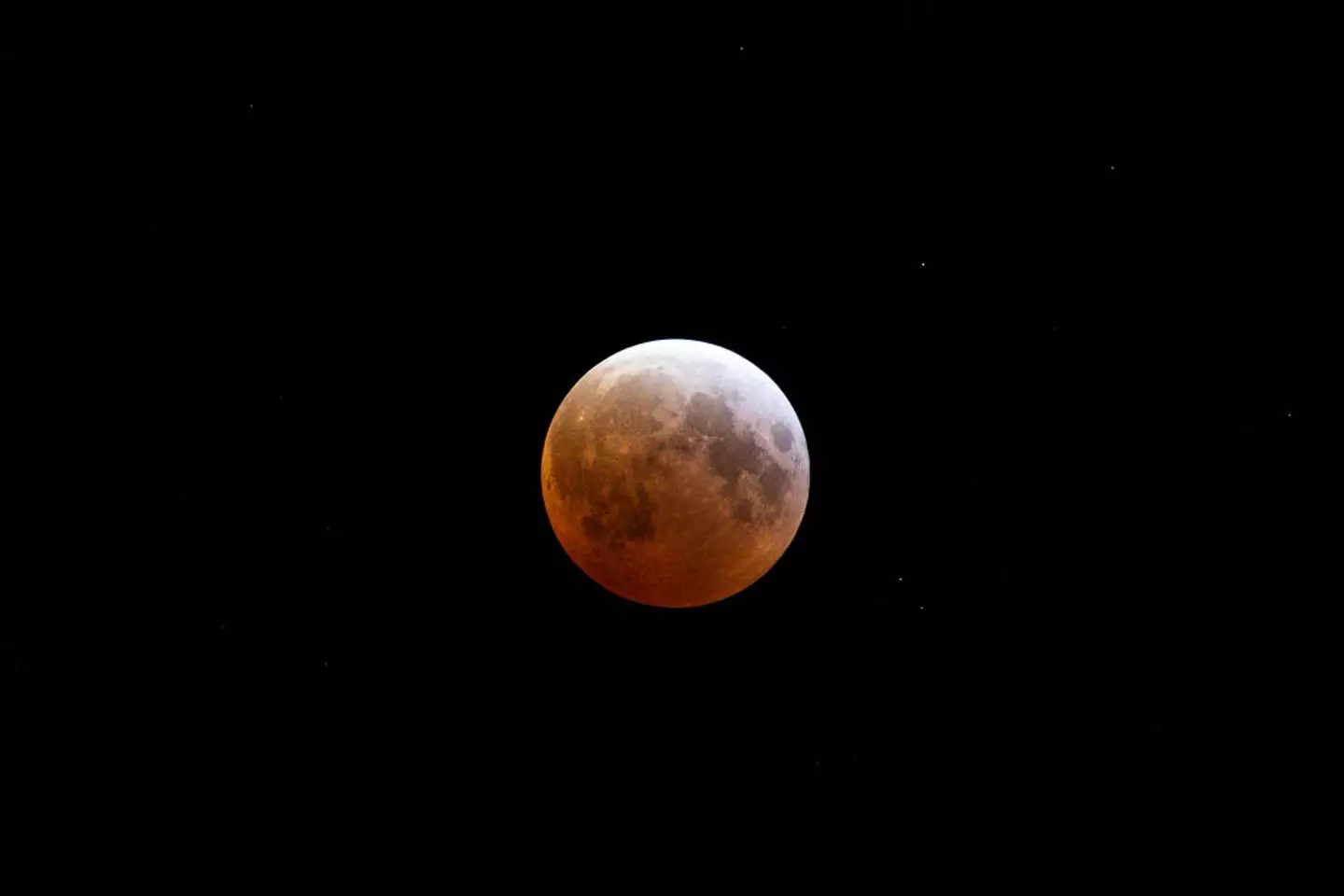The Gospel of Thomas isn’t included in the Bible for several reasons, and offers some pretty different takes to sayings by Jesus in the Biblical Gospels.
The Gospel of Thomas has come under intense scrutiny from scholars and social media users, with one Twitter user even claiming it was ‘banned’ from the Bible.
While the Gospel of Thomas isn’t ‘banned’ from the Bible like the Twitter user suggested, it wasn’t included for several reasons. And it also includes some pretty different teachings when compared to Jesus’ other sayings listed in other religious texts.


The Gospel of Thomas wasn’t included in the Bible (Getty Stock Images)
What is the Gospel of Thomas?
Cross Examined explains the Gospel of Thomas ‘doesn’t follow a narrative structure’ and ‘doesn’t report on major parts of Jesus’ life’.
Instead, it’s reported as containing 114 ‘esoteric sayings’ which detail secrets Jesus allegedly told to his disciples.
One text reportedly begins: “These are the secret sayings which the living Jesus spoke and which Didymos Judas Thomas wrote down.”
In After the New Testament: A Reader in Early Christianity, Bart Ehrman predicts the document having ‘probably’ been ‘written early in the second century’ despite ‘some of these sayings’ potentially being older and ‘going back to Jesus himself’.
As a result, many scholars have questioned the legitimacy of the Gospel of Thomas as a whole – given the above timeframe would mean the Gospel was written after all the apostles died and so Apostle Thomas isn’t the actual author.
However, there’s more reasons why the Gospel isn’t included as a Biblical Gospel too.


There are reportedly three main reasons the Gospel didn’t make the cut (Getty Stock Images)
Why is the Gospel of Thomas not included in the Bible?
The Gospel of Thomas wasn’t included in the Bible for a number of reasons, with Cross Examined noting that the church typically looks for ‘three different attributes’ when assessing whether a text make the cut.
First up, in order to be considered one of the canon – series of definitive biblical texts – the Gospel needed to be traced back to an apostolic eye-witness testimony – and it wasn’t.
‘Apostolic eyewitness’ in Christianity refer to first hand accounts and teaching of the apostles – people chosen by Jesus to be eyewitnesses to his life, teachings, death and resurrection.
While one of Jesus’ apostles was named Thomas, the book was resolved as dating to the middle of the second century – long after the apostles had passed away.
Second, the Gospel didn’t align very closely with any other biblical texts, particularly given it’s more Gnostic – which emphasizes personal spiritual knowledge as the key to salvation – something which the early church rejected as being too different for the time.
And thirdly, the church at the time only really listed four Gospels and those didn’t include Thomas and given its differences to other texts, it wasn’t about to rock the boat anytime soon.
But what does the Gospel of Thomas reveal about the church or Jesus’ alleged teachings which differ so much to other biblical texts?


The messages in the Gospel differ somewhat to those in other biblical texts (Getty Stock Images)
Somewhat surprising messages in the Gospel of Thomas
The Gospel of Thomas doesn’t focus on Jesus’ life, actions in life and death, but more so Jesus as a voice and imparting ‘salvation through his teachings’ rather than ‘death and resurrection,’ Marko Marina, Ph.D. discusses.
In the Gospel of Thomas, rather than ‘sin’ being seen as the main issue with the world like other Biblical texts say it is, ignorance and not confronting the truth and our real identities.
The Gospel quotes ‘Jesus’ as saying: “Recognize what is in your sight, and that which is hidden from you will become plain to you. For there is nothing hidden which will not become manifest.”
Another quote reads: “And he said, ‘The man is like a wise fisherman who cast his net into the sea and drew it up from the sea full of small fish. Among them the wise fisherman found a fine large fish. He threw all the small fish back into the sea and chose the large fish without difficulty. Whoever has ears to hear, let him hear.'”
And the Gospel of Thomas’ Jesus also had some different ideas as to where the ‘kingdom’ is.


However, many scholars don’t consider the Apostle Thomas as the author of the document (Getty Stock Images)
In the Gospel of Thomas, an alleged quote from Jesus reads: “If those who lead you say to you, ‘See, the kingdom is in the sky,’ then the birds of the sky will precede you.
“If they say to you, ‘It’s in the sea,’ then the fish will precede you.
“Rather, the kingdom is inside of you, and it’s outside of you.”
And while some have seen the Gospel of Thomas’ alleged sayings from Jesus as a mockery of or as going against other sayings in the Bible, it’s important to recognise the sayings aren’t exactly mutually exclusive and can both co-exist.
And ultimately, the idea of faith being found within yourself rather than an establishment, building or authority is a lot more aligned with many more modern perspectives of the Church.
Featured Image Credit: Leemage/Corbis via Getty Images
Topics: World News, Religion
.png)
.png)
Just shy of 2,000 years ago, Jesus Christ died by way of crucifixion after being arrested and sentenced to death… or so we thought.
A sacred text banned from the Bible claims to reveal the identity of the person who killed Jesus, changing everything that we know about the death of the Lord.
The ancient line is written in the Acts of Pilate, more commonly known as the Gospel of Nicodemus, but despite professing the ‘truth’ about the Son of God, it has never been accepted into the Holy Book as we know it.
But before we get into it, let’s quickly run through the time and date of Jesus’ death.


The Crucifixion by Jean Francois Portaels (Getty Stock Images)
It has been universally believed that Jesus died on Good Friday, therefore he died on 3 April AD 33 at around 3pm.
Even NASA has looked into it. On its website explaining how far back in history solar eclipses have been recorded, the space agency stated its evidence.
“Christian texts mention that the Moon turned to blood after Jesus’s crucifixion – potentially referring to a lunar eclipse, during which the Moon takes on a reddish hue,” it read.
“Using this textual source, scholars narrowed down a possible date of crucifixion to Friday, April 3, 33 C.E. because a lunar eclipse occurred that day.”
So now we’re all singing from the same hymn sheet, let’s get into it.
Pierced by a spear on the cross
In the Bible, the book of John chapter 19 verse 34 (John 19:34), it references a Roman soldier having stabbed Jesus – who many scholars believe would have likely actually have been called Yeshu Nazarene.
The verse in question reads: “But one of the soldiers pierced His side with a spear, and immediately blood and water came out.”
But who was that soldier?


Sculpture of Jesus and Longinus, the Roman soldier who pierced Christ in his side with a lance, in the Cathedral of Leon, Spain (Getty stock)
The man known as Longinus
In the Gospel of Nicodemus, the scripture claims to know the identity of that solider. His Name? Longinus.
Deep in the book it notes that Longinus took a lance and pierced the side of Jesus, and just like in the Book of John, blood and water poured out of him.
While the Eastern Orthodox Church claim Longinus to be the person quoted in Matthew 27:54 saying “Truly this was the Son of God,” after an earthquake followed Jesus’ death.
Despite having never been named in the Bible, legend has it that he witnessed the supernatural events that took place and converted to Christianity.
However, there’s no physical or historical evidence that actually confirms Longinus to be a real person, although there are many stories that have been passed down which details how he was later killed due to his Christian beliefs – having preached the gospel.
That was at a time when Christianity was illegal – during the early centuries of the Roman Empire.


The Statue of Saint Longinus the Centurion Rome’s St Peter’s Basilica, Vatican City (Steve Christo/Corbis via Getty Images)
While there is no evidence to confirm his existence, other than scripture, a statue of Longinus can be found under the dome of Saint Peter’s Basilica, in the Vatican City.
Why the Gospel of Nicodemus was banned
There is a debate over who exactly wrote the scripture due to the date recorded.
It was never canonized by early Church leaders. It is thought that it is because it is a later work dating back to around the 4th or 5th century – so hundreds of years after the events took place.
Although many others believe it was the work of Nicodemus, who was mentioned in the Gospel of John as to having helped bury Jesus.
Featured Image Credit: Getty Images/Pleasureofart
Topics: Religion, Catholic Church, History


Pope Leo XIV has taken to Twitter to share a series of seven tweets addressing the Holy Church’s stance on the current conflicts taking place across the globe.
For some reason, a religious figure taking to Twitter just seems wrong. But when Pope Leo does it? Well, it’s just oh so right.
On May 8, Pope Francis‘ successor was officially announced, with the role of head of the Catholic Church going to 69-year-old Cardinal Robert Francis Prevost – whose papal name is Pope Leo XIV.
Since taking on the role, Pope Leo has already seemingly shaded Donald Trump, according to some social media users.
Not only has the new pope previously snubbed US president Donald Trump’s administration on Twitter, but he’s now taken to the social media platform on a new page for his new title to share some words.
Taking to Twitter on May 14, Pope Leo’s account wrote: “Peace be with you all! This is the first greeting spoken by the Risen Christ, the Good Shepherd. I would like this greeting of peace to resound in your hearts, in your families, and among all people, wherever they may be, in every nation and throughout the world.”
And Pope Leo certainly didn’t just stop there – going on to quote the Pope not before but twice before him.
Pope Leo quoted his third predecessor as talking about the ‘preservation of the Eastern rites is more important than is realized’.
Adding to this, the current pope urged the world to ’embrace the appeal to safeguard and promote the Christian East, especially in the diaspora’.


Throw out the paper and pass Pope Leo a phone (y Simone Risoluti – Vatican Media via Vatican Pool/Getty Images)
“The ancient, yet ever new spiritualities of the Christian East offer a healing balm. They merge an awareness of human misery with awe for divine mercy, so that our lowliness never leads to despair but invites us to welcome grace,” he added.
Reflecting on the ‘violence’ and ‘wars’ in the world, Pope Leo argued this ‘horror’ ‘should provoke outrage’ given how many ‘die in the name of military conquest’ and it’s important, through it all, to remember the ‘call of Christ’: “Peace be with you.”
However, Pope Leo noted ‘Christ’s peace is not the silence of the tomb after a conflict, and it is not the result of subjugation’.


Pope Leo sent a strong message (Alberto PIZZOLI / AFP) (Photo by ALBERTO PIZZOLI/AFP via Getty Image)
He reflected on peace as being ‘a gift’ that helps people ‘renew’ their lives, found in the form of ‘reconciliation, forgiveness and courage’, a peace which we should all ‘pray for’.
With ongoing conflict taking place across the globe from Ukraine to Sudan, Gaza and Syria, Pope Leo noted the Holy See is readily available to step in and try and help negotiations in whatever way it can.
His final tweet of the series resolved: “War is never inevitable. Weapons can and must fall silent, for they never solve problems but only intensify them. Those who sow peace will endure throughout history, not those who reap victims. Others are not enemies to hate but human beings with whom to speak.”
The head of the Catholic Church has elicited quite a strong response on social media, amassing 18.5 million followers in just a few days since he created his Twitter account.
His first series of tweets have received an outpouring of responses online, with thousands flocking to the posts to comment, and one user noting: “Your message of peace is important, now more than ever.”
Featured Image Credit: TIZIANA FABI/AFP via Getty Images
Topics: Pope Leo, Religion, World News, Twitter, Social Media


NASA’s latest find could prove the date on which Jesus died.
Whether you believe that he was a real person or not, there is something to be said about some accurate world events from the Bible and then in the real world.
There was the cloth that was allegedly used to wrap him in after his burial, which was found, dated and tested.
There is some evidence to suggest that Noah’s arc and flood could have occurred, and more.
But when it comes to the lore of Jesus, it can be harder to find out if he existed or not.
Regardless, we can finally pinpoint the exact day he died on the crucifix, thanks to NASA.
While we generally consider April and Easter to be around the time he died and rose from the dead, there’s a lot to be said about keeping an accurate portrayal alive across the 2,000 years that Abrahamic religions came to fruition.
It’s hard to keep details like that the same for such a long length of time.
So, before NASA came out with their own evidence, it has been universally believed that Jesus died on Good Friday, therefore he died on 3 April AD 33 at around 3pm.


NASA has revealed the exact date Jesus died (Miguel J. Rodriguez Carrillo / Stringer / Getty)
Just a few hours before the beginning of Passover day and the Sabbath.
But what does the space agency’s astronomical models say to this?
Well, they have the exact same date on their end.
In a shocking turn of events, NASA’s data has pinpointed an exact day and approximate time that Jesus died based on scripture entries of his death.
The Bible verse in question reads:
“From noon until three in the afternoon darkness came over all the land,” one translation of Matthew 27:45 states, which describes the skies as Jesus lay on the cross.
And just as it happens, a lunar eclipse took place on Friday, 3 April, 33 AD.
NASA discovered this in the 1990s, where the agency shared that the ‘Christian texts mention that the Moon turned to blood after Jesus’s crucifixion—potentially referring to a lunar eclipse, during which the Moon takes on a reddish hue’.
Biblical experts Colin Humphreys and W Graeme Waddington of the University of Oxford also went on to say that Joel’s prophecy in the Old Testament says that the moon would turn to blood and the day of the Lord would come, which matched closely what happened when Jesus died.


Using lunar cycle history, bible references and the Jewish calendar, the date was revealed (GraphicaArtis / Contributor / Getty)
Their report shared that the date of the Crucifixion has been debated for years, but no agreement on the year or the day has happened.
However, thanks to the astronomical calculations used to reconstruct the ‘Jewish calendar in the first century AD and to date a lunar eclipse that biblical and other references suggest followed the Crucifixion’.
Then, in a page on NASA’s website explaining how far back in history solar eclipses have been recorded stated: “Christian texts mention that the Moon turned to blood after Jesus’s crucifixion – potentially referring to a lunar eclipse, during which the Moon takes on a reddish hue. Using this textual source, scholars narrowed down a possible date of crucifixion to Friday, April 3, 33 C.E. because a lunar eclipse occurred that day.”
So, now we know.
Featured Image Credit: Pascal Deloche/Getty
Topics: NASA, Religion, Science, World News


Donald Trump has hit out at Europe for celebrating the end of World War Two.
Despite ruling April 2 ‘Liberation Day’ for the US in his bid to ‘Make America Great Again’, Trump bizarrely called the US a ‘stupid country’ earlier this month.
And he hasn’t just decided to offend Americans either, but has since spoken out about Europe too.
Yesterday (May 15), Trump addressed US troops stationed in Qatar as part of his trip to the Middle East.
He said: “A week ago, May 8, I call up a certain country and they say, ‘Oh we’re celebrating the victory of World War Two today’.
“And I say, ‘Oh okay’.”
Trumps’ speech got even more outrageous from then on.
Trump continued: “I speak to one of the presidents or prime ministers or whatever. And they were so busy, ‘Oh yes we’re celebrating the victory of WW2’. And I speak to another one and they’re celebrating.
“And the fact is Russia was celebrating, France was celebrating, everyone but us.
“And we’re the ones that won the war. We won the war and they help, but without us they don’t win the war, we’re all speaking German – without us they’re speaking German and maybe a little Japanese too.”
Oh and then he decided to single out France too.


Prime ministers, presidents, potato, potato (Andrew Harnik/Getty Images)
He added, as quoted by Euro News: “I think we did a little more to win the war than France did. Now, we love France, right? But I think we did a little more to win the war than France. Do we agree? I don’t want to be a wise guy, but when Hitler made a speech at the Eiffel Tower, I would say that wasn’t exactly ideal.”
Imitating French Prime Minister Emmanuel Macron’s accent, Trump continued: “‘Donald, we are celebrating our victory over the Germans’.
“I said, ‘What the hell?’ Every country I’ve spoken to in the last week is celebrating the war but us. Isn’t that terrible?”
Trump resolved: “We won the war and we’re the only ones who didn’t celebrate, so what I did, is I got my crack staff over there and we did it every time we had May 8 and we also have the date in November, that sacred date in November for World War One, because we won that war too.”
Subsequently, not only May 8 but November 11 will be known as ‘Victory Day for World War I’ – rather than Veteran’s Day, People adds.
And it’s not taken long for people to weigh in.
One Twitter user said: “And this is why Europe wants nothing to do with the US.”
“Without France, Americans would still be drinking Her Britannic Majesty’s tea,” another added.
A third simple resolved: “Trump is a moron.”




